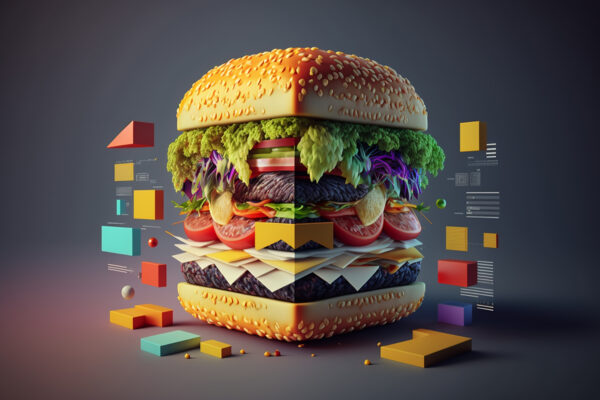Heard a lot of talk about the possibilities and pitfalls of AI lately? Sure you have.
It’s a subject that’s been on the minds of many, including those in the food industry. And if you’ve been part of our Simply Smarter community, you know that we’ve shared a great deal about the latest advancements pertinent to food companies in reports including our Midyear Trends and Annual Trends, and that we’ve also produced a lot of research on the subject, such as how AI is changing menus, as well as consumer and operator sentiment regarding all facets of technology.
As a company that has been collecting menu data for more than two decades, and incorporating AI on our platform to help improve both the way we work and the results for customers for more than 15 years. We’ve learned how to use AI not just to free up our colleagues to do more advanced work, but also to advance our abilities to tell deep and insightful stories about the food landscape.

We recently sat down with our Chief Product Officer and asked her to give us a peek under the hood to share how foodservice companies can leverage AI in new item development and refinement.
Below is a Q&A with CPO Dana Konwiser:
Q: How would you summarize Datassential’s history with AI and why it’s unique?
A: AI at Datassential in particular takes advantage of our very large and foodservice-specific longitudinal datasets (which track the same information repeatedly at multiple points in time) that provide incredible training data. The size, specificity and consistency of this data both enables us to make accurate predictions of the future and to rapidly consume and include new data in our platforms. Even when something new appears on menus for example, our AI can quickly identify what type of item it is and we can get a jump start learning more about how we think it will perform with consumers.
Q: Can you explain what you mean by training data?
In practice, when we go to write a new algorithm, we create a rule book of sorts that tells it what we want it to do for us. Training data is the information we provide that makes the algorithm smarter.
Take an example from Price Monitor, which gives restaurant companies a view of price variations across menu items, locations over time, and in comparison to local competitors.
In the case of branded foods that are prevalent at QSRs, like a Whopper or a McCrispy, AI wouldn’t necessarily know which was a burger and which was a chicken sandwich, but our extensive training data and our team of experts can work together to create the foodservice-specific dictionary that makes the algorithm smarter and more knowledgeable about both branded and unbranded items going forward.
Q: So AI, in order to work at the highest level, needs subject matter experts to work hand-in-hand.
A: Absolutely. We’re using AI to enhance the speed and efficacy of our work, automating repetitive tasks, and to figure out how to do something that we’ve never done before. All of these things enable us to put our amazing team of food and beverage experts to work on more impactful and more important tasks to better serve our customers.
Q: Going back to the subject of history, can you tell me how historical data really matters here?
AI enables us to really see the full extent of the trend even if we didn’t know it was going to be a trend when it first came on the scene.
The plant-based trend is a great example of this. Its early origins on menus didn’t come with the label plant-based; the term hadn’t even been coined yet. The trend was brewing though with other terms like vegetarian, vegan, alt-milks, alt-meats. As the trend got bigger, we saw menus adopt new labels and language that helped customers easily find those plant-based items. Using AI and our 20 years of menu data, we are able to measure the true arc of the trend before and during and after its labeling evolution.
Using AI we can find these early items and use them to understand the true arc and acceleration of the trend. That data then becomes key in making accurate predictions going forward.
So we can go all the way back to the Inception phase and identify it – and we can even see how long it was in that first phase of the Menu Adoption Cycle with our plant-based algorithm.
Q: And what about the future?
A: We have many datasets that have spanned over many years and that allow us to make accurate predictions of the future, and to continuously work with AI to make it smarter and more effective for our customers.
We can show today how prevalent any food or flavor in our universe will be over the next four years with incredible accuracy. And the more our human experts work with AI in the years to come, the more possibilities there are and the better it will be.
__________________________________________________________________
Samantha Des Jardins is the Content Marketing Manager at Datassential.
For a demonstration of any of the products mentioned above, reach out to us here.
For media or press inquiries, email media@datassential.com.






